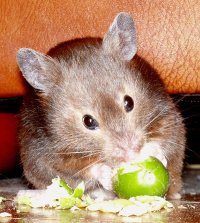 |
| Female Black widow spider sunning herself on a nice day. (Photo credit: Wikipedia) |
The black widow spider is probably the most famous and feared spider species in the world, and all the scary picture comes from the habit of the female spider to devour the male after mating. It is this specificity that is actually responsible for the name of the species as such, but there are plenty of other features that make the black widow spider stand out.
The most common color of this spider is dark brown or black with a red hourglass pattern on the body; the legs are hairy and the jaws seem very strong. There are several other varieties related to the black widow spider; they live in South Africa and Australia, and the major difference from the North American black one is of color: they are red and brown.
Even in North America, there are three different types of the black widow spider and their classification is made according to the geographical area where they live: there is the northern black widow, the southern black widow and the western black widow; thus the species is widely spread from the south of Canada to Mexico. Though there are some morphological differences, the three varieties are pretty much related and similar to each other.
Like many other venomous creatures, the black widow spider has bright red pattens on it as a warning sign for predators that would attempt to feed on it. The black widow spider is not capable of killing a bird that would eat it, but the digestive sickness that would follow will be definitely enough to make it avoid attacking the black widow again.
The female black widow spider is more venomous than the male, and it is she the biggest threat to predators. Nevertheless, the red color helps the males too in order to send the same threatening message as the female. While the males move freely in their habitat, the females usually spend their entire lives in just one place, as they very seldom leave their nests.
In terms of toxicity, the black widow spider has one of the most potent venoms in the animal world: it is actually fifteen times stronger than that of the rattlesnake for instance. It also surpasses the cobra and the coral snake in the effectiveness of the poison. Though death is not usually the outcome of a black widow bite, some dozens of cases have been reported over the last decades only in the United States. Nevertheless, on a more common basis, the black widow spider bite causes very serious symptoms and necrosis.






